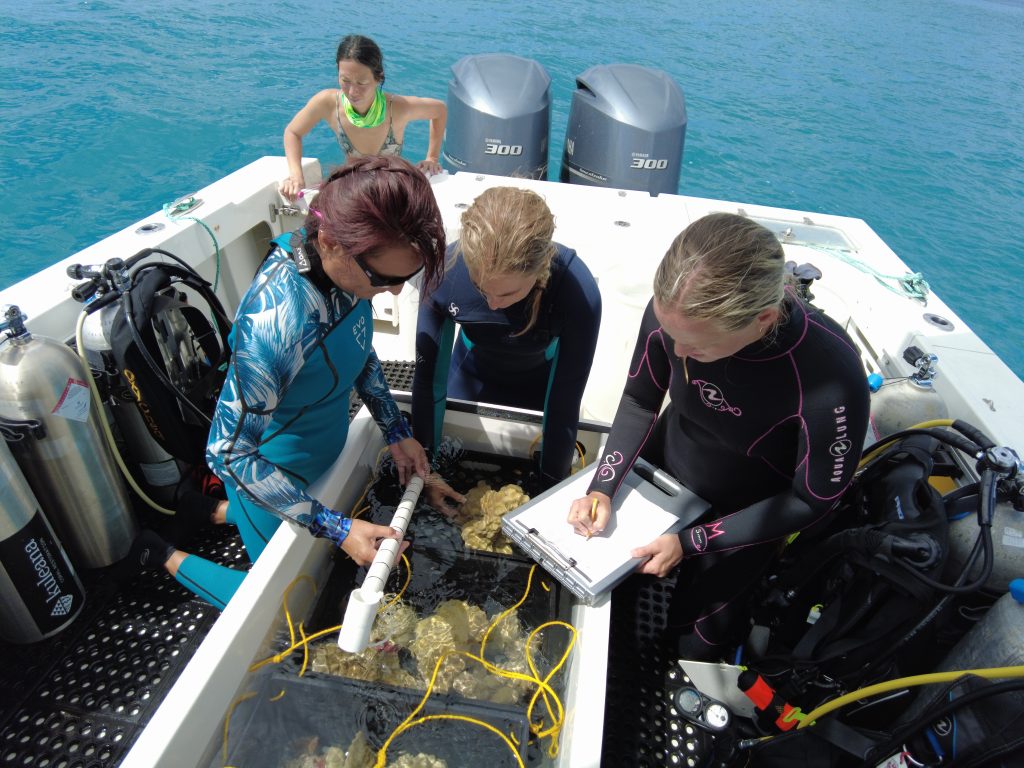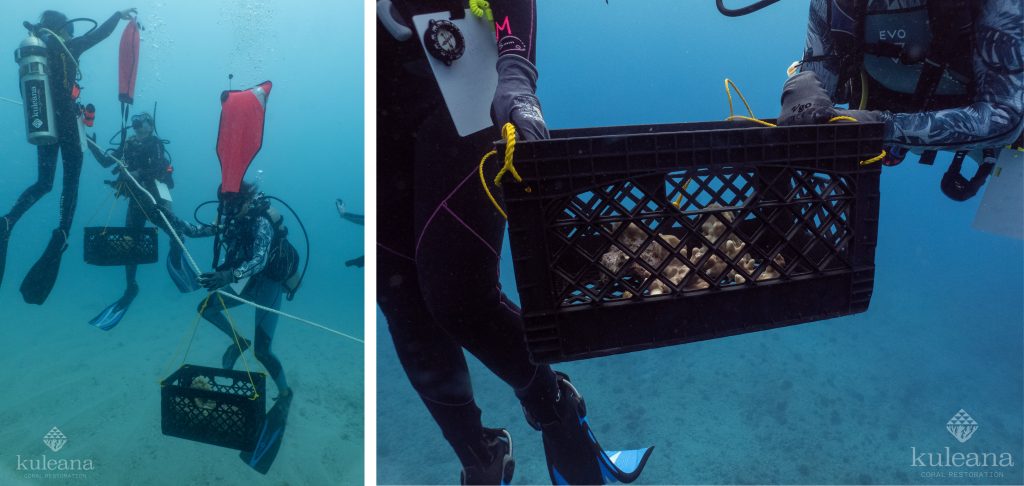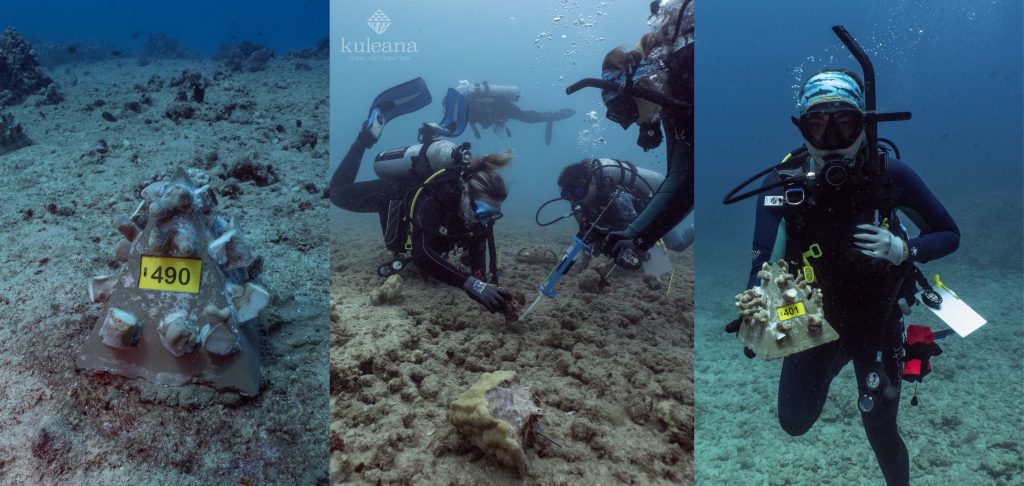Community-Based Restoration for Maui’s Coral Reefs
Despite its critical role in our daily lives, one of Maui’s greatest natural treasures often goes unnoticed beneath the ocean’s surface. Coral reefs are not only home to an array of marine life but are also a key part of the island’s culture and economy. Like many reefs worldwide, Maui’s reefs face a host of threats including warming water temperatures, harmful human activity, and pollution.
The Maui Nui Marine Resource Council (MNMRC) has a long history of taking action to protect local reefs, from forming the Maui Coral Recovery Team to creating Hawaiʻi’s first reef-friendly landscaping certification program. Most recently, our staff had the opportunity to learn from our partner organization, Kuleana Coral about the restoration techniques they have successfully used at several sites around Oʻahu.

MNMRC staff Ylenia St. Louis, Christiane Keyhani, and Jill Wirt learn assess corals of opportunity.
“The vision behind Kuleana Coral’s training program is to make it easier for communities across Hawaii to establish Community Based Coral Restoration Areas (CBCRA),” said Alika Garcia, Co-founder and Executive Director of Kuleana Coral. “By providing this training, we aim to equip organizations with skills to complement their land-based restoration efforts and to support their community’s vision for restoration in their area.”
Three staff members from MNMRC traveled to Oʻahu in March 2024 to complete the training program, which included one day of in-class learning and three days of dive training and technique instruction. The day of in-class instruction covered best practices for selecting a restoration site, which types of coral are ideal to work with and how to identify them, and how to collect “corals of opportunity,” which are pieces that have either broken off or become dislodged from the larger colony and withstand a low chance of survival without intervention. These are the pieces used for restoration activities and are only collected if they are already unattached when found.

Left: MNMRC staff use lift bags and crates to collect corals of opportunity. Right: Coral of opportunity. (Photo Credit: Kuleana Coral)
After the day of in-class learning, MNMRC staff were trained in two restoration techniques: fragmenting and large rescued coral colonies (LRCs). Fragmenting happens when a grapefruit-sized coral of opportunity is cut into smaller pieces that are around 1-1.5 inches in length. After the fragments are made, they are glued to a “module,” such as a concrete pyramid, with five to six fragments on each of its four sides. These pyramids will then be outplanted into the existing reef habitat if available or other hard substrate that coral can attach to and eventually spread out on.
The second technique, large rescued coral colonies, is used when a larger piece of coral–around the size of a watermelon–has been dislodged but can be reattached to the reef or other hard substrate. In this method, a pin is inserted into the colony where no live coral tissue is present while a hole is drilled into the bare reef area or other exposed, hard surface in which the pin can be inserted and the large coral reattached.

Left: Closeup of an outplanted module. Center: MNMRC staff reattach an LRC to the reef. Right: Hui O Ka Wai Ola Program Director, Christiane Keyhani holds a completed module ready for outplanting. (Photo Credit: Kuleana Coral)
While there are a host of additional measures needed to save our reefs, Jill Wirt, MNMRC’s Program Director, believes restoration methods like fragmenting and reattaching LRCs could prove to be a powerful way to support the community’s vision for the reefs in their area. “We know the goals and priorities of each area will be different, whether it is creating more fish habitats, thermal resilience, more coral cover, or something else,” said Wirt. “By making these restoration techniques available and connecting them to existing land-based restoration efforts, we hope to work with our community to make the change they want to see in their local reefs.”
With restoration training complete, MNMRC is now preparing to apply for State permits that will allow them to conduct restoration work in South Maui. “Kuleana Coral has done an amazing job of showing us how restoration is possible through their Oʻahu sites,” said Wirt. “Now that we can bring these skills to Maui, applying for the required permits to operate on the island is the next step to make this resource available to the community.”
VIDEO (Instagram): Kuleana Coral Restoration Training Recap
Note: Please do NOT touch any live coral without obtaining a permit! Special permits are required for handling coral in Hawaiʻi [SAP 2024-09]



No Comments
Sorry, the comment form is closed at this time.